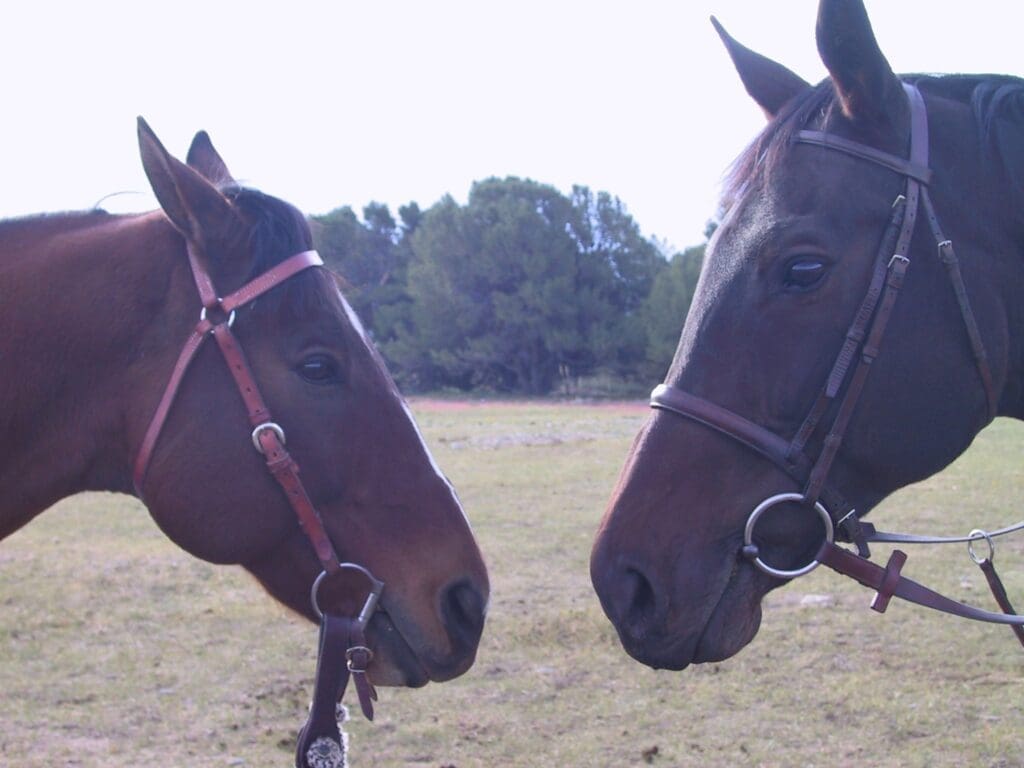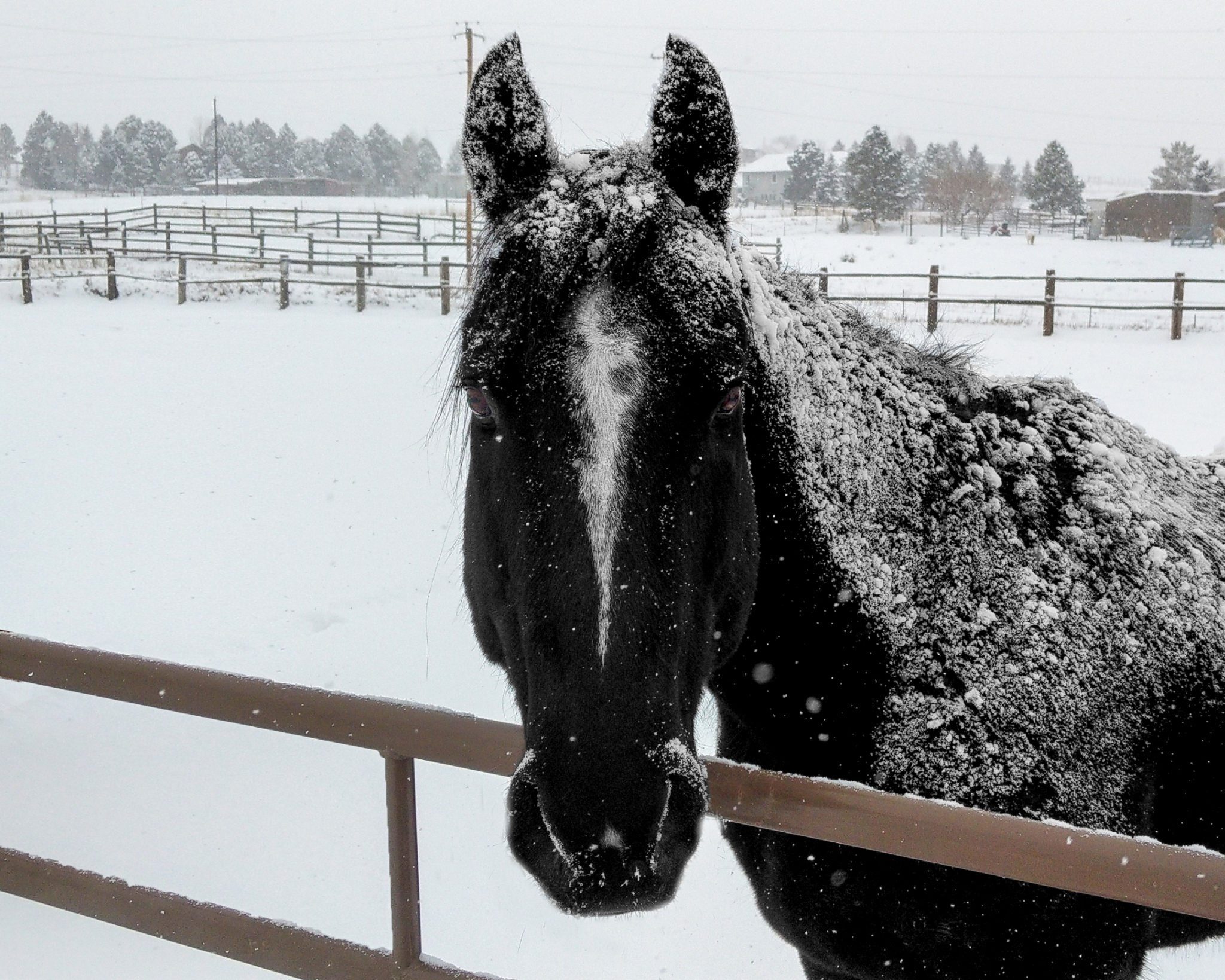
Identify holes in your horsemanship training and continually seek new information
An assignment from my first riding instructor—assembling a bridle from scratch—at first seemed like an easy task. But what seemed easy turned out to be daunting. I knew what a bridle should look like, but I hadn’t gained enough wisdom to know how each piece fit together. I finally I got it right, but I was humbled in the process.
This was the beginning for me. I realized that sometimes you don’t know what you don’t know. I’ve come to believe this is especially true of horses. The more you learn, the more you know what you don’t know. It’s important to make sure you know more than just how to do something—to understand the “whys” of horsemanship and to continually seek a better understanding.
That early lesson helped me understand that I needed to know how the bridle worked and why each piece was important. That first lesson helped me form my own teaching style—making sure to teach riders why they do a task instead of just teaching how to do it. When you understand the whys, you’re drawn into horsemanship and you yearn to know more. Learning why you should move a rein a certain direction or why you shouldn’t greet a horse by rubbing on his muzzle helps you understand horse behavior and make sure you continually learn.
The First Lesson
As a youngster, I took riding lessons from a wise old trainer, Miss Valla. I was her hungriest and most dedicated student, albeit one of her youngest riders, and I worshipped the ground she walked on. I finagled way more than my allotted lesson time with her–coming early and staying late, endearing myself to her by spit polishing the horses and being her gofer, when I wasn’t in a lesson. It was a mutually beneficial relationship (the barn rat to the old master), although I thought I was incredibly lucky to be under her tutelage.
One evening when I was only nine or ten years old, Miss Valla gave me a challenging homework assignment to be completed before I could ride again the next day. She handed me the English bridle from my favorite school horse and made me sit down in front of her and take it apart until every single little piece was in a pile. Then she shoved all the pieces in a bag, along with a rag and a bar of glycerin, and told me to take it home, clean every piece, and then reassemble the bridle. Only when the bridle was completely together correctly, should I even bother to bring it back for her approval–and only then would I be able to ride again.
“Piece of cake,” I thought, as I jumped on my bike and headed for home, thrilled to bring a piece of tack home with me. I was sure I would have the task perfectly completed well before my bed time; I would bring it to her bright and early the next day, proving once again what a talented student I was. After cleaning and scrubbing every square centimeter of leather and washing and polishing the bit, I was left with a jig-saw puzzle of pieces, with no idea how they fit together. I must have put that bridle together and taken it apart at least a dozen times before I got it right. I knew what it looked like when it was right; I just didn’t know how to get there. Although I had previously memorized the parts-of the-bridle, I didn’t really know what each piece was and how it all fit together.
By the time particular this exercise was over, I knew everything I needed to know about the bridle and it was a skill-set that I would draw on for the rest of my life. It taught me the importance of fully understanding tack, not only knowing the proper terminology for its parts, but also what each part does and how it fits together. I also came to understand the value of studying basic information. I never again complained about the worksheets we had to fill out on parts of the tack, horse breeds or common equine diseases. For a kid that absolutely hated school work, I would dive nose-first into every homework assignment I got from Miss Valla.
I was fortunate to have a great classical education in horsemanship as a youth rider and this upbringing shaped the way my career unfolded and I believe it is responsible, in part, for my success. I learned early on in my career, first as an instructor, and later as a clinician, that without a solid foundational layer in your knowledge, it does no good for me to teach you higher level skills.
Understanding the WHY
When I first started teaching clinics, about 20 years ago, I realized that a lot of very experienced horse people often have gaps in their knowledge when it comes to horsemanship. It doesn’t do you any good to work on flying lead changes if you don’t understand leads, footfalls and the canter cue. It doesn’t do you any good to try a certain groundwork exercise if you don’t understand what behavior you are trying to change and what signs to look for when the horse is responding correctly.
I learned a long time ago that just because someone can DO something, doesn’t mean they understand WHAT they are doing and WHY it works. I also learned, as most good teachers do, that many people will never tell you when they don’t know what a certain term means or when they don’t fully understand. So I define and explain as best I can, whether they ask or not—never assume the student knows or will ask if they do’t. To teach successfully, you must break down the lesson and help the student learn why each step is so important.
Backing Up to Move Forward
With horsemanship and with horse training, it is important to have a solid understanding of the basics—in all matters. Sometimes we have to go back to fundamentals before we can move forward, even with an experienced horse or rider. When I teach any given topic, I work hard to cover it from A to Z, never leaving out the important fundamentals before moving onto the higher level application. It’s amazing how often the more experienced riders will comment how grateful they are to have the gaps filled in their knowledge. In many instances, it is the fundamental information that was the missing link that makes everything come together with your horse.
So I ask you, do you know the parts of your bridle? If someone handed it to you in a pile, could you whip it together right away? Do you know the parts of the saddle, what type of saddle it is and what the pros and cons of that saddle design are? If I asked you to check to see if your horse’s gaskins were equal, would you know where to look? Do you know what the term ‘collection’ really means and could you define it for someone that had no idea? If not, it’s time to study! Come to one of my clinics and we might talk about all of this!
My favorite part of horses and horse sports is that it is a life-long pursuit and there is always another challenge ahead of you. I’ll never grow tired of learning more about horses and riding, and I love sharing my passion and knowledge with others. This is why I created my online resource library for horse enthusiasts, Horse Master Academy.
I hope you’ll join me, either online, or up-close-and-personal at a horsemanship clinic or horse expo near you, in the pursuit of more horsemanship knowledge. Until then…
Enjoy the ride,
Julie
Become a Julie Goodnight Library Member

